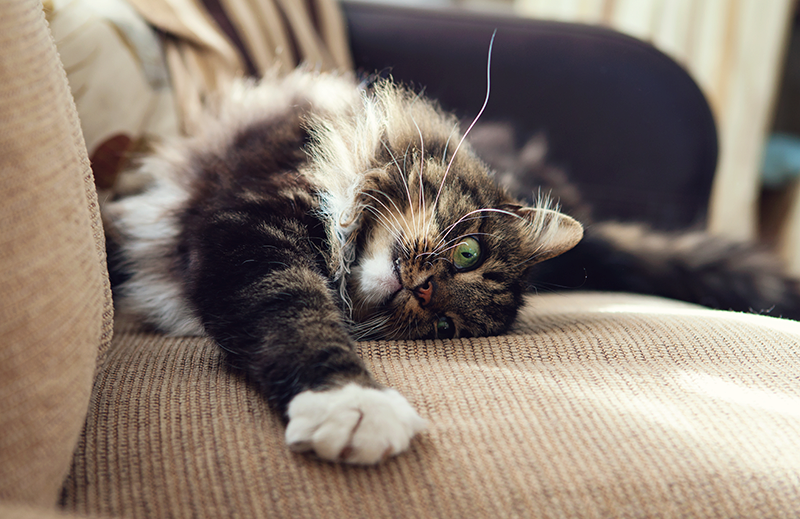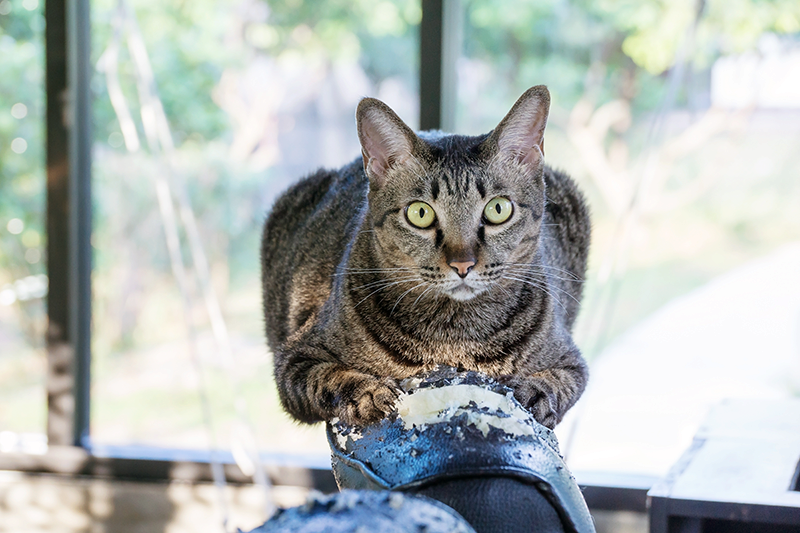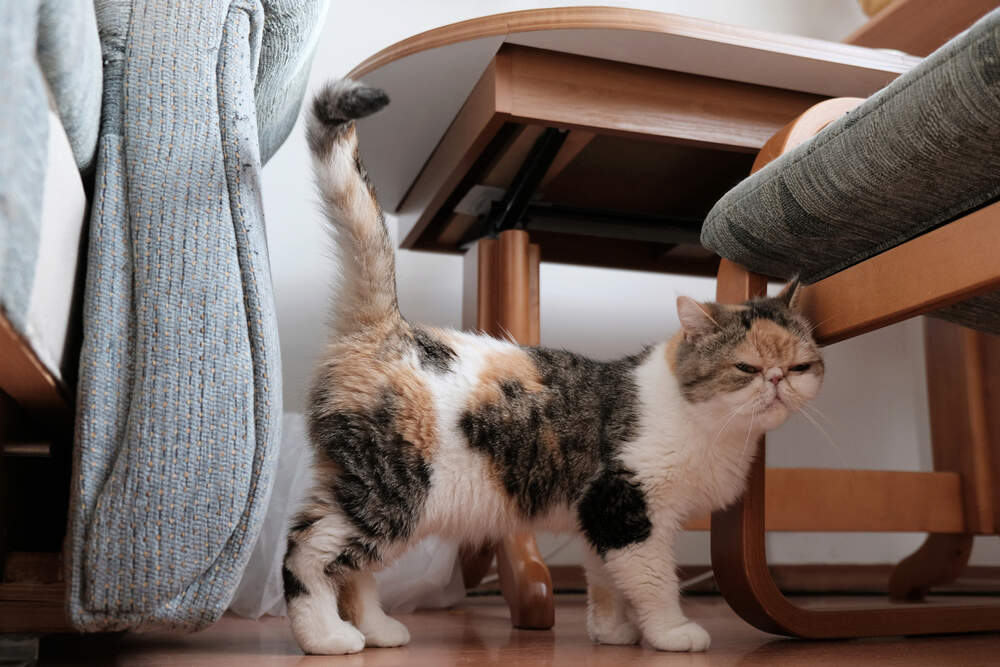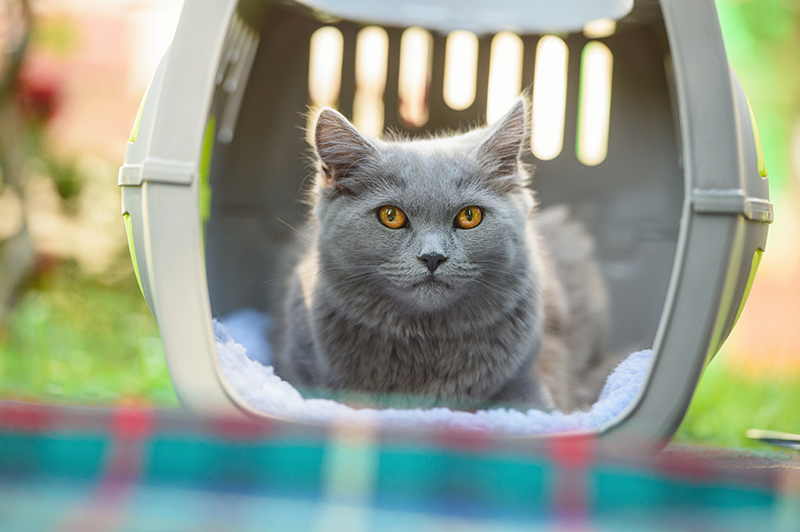What Are Cat Pheromones and How Do They Work?
Bring up pheromones in casual conversation, and the responses might range from puzzlement to musings about whether those “pheromone perfumes" can really make you irresistible to the opposite sex. But cat pheromones are about a lot more than attraction; they help cats mark their territory and feel calm and secure. We're here to give you some of the facts (and maybe dispel a few myths) about the often-mysterious pheromones and how they work in the cat world.
What are pheromones?
Pheromones are chemical signals that many creatures use to communicate. Worker bees rally the rest of the hive by producing alarm pheromones when they perceive a threat. And pheromone markers are how a trail of ants quickly finds its way to the cookie you left on the counter. Though their effects have been noticed for centuries, the first pheromone wasn't actually identified until 1959 by German chemist Adolf Butenandt.1
We primarily hear about how mammals, like cats and dogs, use pheromones to attract or select mates. But they're also used for a variety of other functions from marking territory to appeasing newborn babies.
Which pheromones do cats have?
You might be surprised to learn there are many different types of cat pheromones. The feline facial pheromone (FFP) is used when cats rub their faces on furniture and other objects. They're marking these with a pheromone that signals the objects are familiar and safe. The facial pheromones are produced by glands around the cat's cheeks and chin. Cats may head bunt you to help put their scent on you and mark you as part of their colony.2
The cat appeasing pheromone, in contrast, is used by moms to appease newborn kittens, helping a nursing mother form a bond with her babies.
Cat urine contains felinine, an amino acid with sulfur known as a putative pheromone precursor.3 This is especially prevalent in male cat urine and accounts for the odor. The scent works as a way of marking their territory.
Cats also have a feline interdigital semiochemical produced by glands near their paws, helping mark their territory when they scratch or knead.
How do cat pheromone products work, and how do they help with behavior issues?
Comfort Zone products are calming, odorless vapors that mimic a cat's natural pheromones. The Comfort Zone Calming Diffuser and Comfort Zone Spray & Scratch Control Spray each mimic the cat facial pheromone that signals a safe, familiar territory. They can help reduce stress behaviors like cat urine marking and cat scratching. These stress behaviors are often triggered by life changes like traveling, new furniture, unfamiliar people, a new environment, or even visiting the vet.
The Comfort Zone Multi-Cat Diffuser is formulated with the same version of the feline facial pheromone to help all the cats in your home feel safe and secure.
It can take a few days to a few weeks before you notice your cat acting more calmly, so employ other calming techniques as well. These can include giving your cat a window perch to watch the outside world, setting up a cat tree or condo so your cat has his own "territory," or extending playtime with your cat to expend some of that pent-up energy.
If your cat has been stressed or nervous lately, a calming pheromone can do wonders. The diffuser is ideal for long-term use, giving a calming effect to a room in your home. Sprays are best for specific objects, like the inside of a carrier, or when you're on the road and can't bring a diffuser with you.
Pheromones may sound mythical in their abilities, but understanding how cat pheromones work can help your cat feel safe and reduce potential stressors in your home.
1. Shampo, Marc, et. al. "Adolf Butenandt - Nobel Prize for Chemistry." Mayo Clinic Proceedings, April 2012, https://www.ncbi.nlm.nih.gov/pmc/articles/PMC3498200/.
2. Locker, Melissa. "When Cats Rub Their Heads Against People or Things It's Called Bunting." Southern Living, 27 February 2020, https://www.southernliving.com/news/cats-rub-face-what-is-bunting.
3. Miyazaki, Masao, et. al. "A Major Urinary Protein of the Domestic Cat Regulates the Production of Felinine, a Putative Pheromone Precursor." Chemistry & Biology, October 2006, https://www.sciencedirect.com/science/article/pii/S1074552106003097?via%3Dihub.




